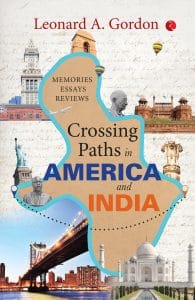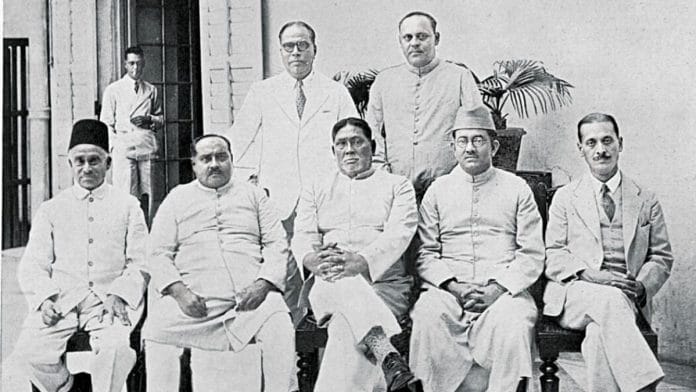There is difficulty in lumping together all the Muslims resident in Bengal as an ethnic category. Many of those in the small Muslim elite were Urdu-speaking Muslims who did not think of themselves as or call themselves ‘Bengalis’. They usually did not speak Bengali and did not identify with the masses of Muslims in Bengal who were Bengali speakers.
The models followed by the Urdu-speaking Muslims were Arabic and North Indian aristocratic, cultural, and religious ones. Appeal was made to the Great Tradition of Islam and prestige was given to foreign birth, Arabic names, descent from the Prophet, Urdu speech, and membership in the Ashraf, or upperclass Muslim community in India. Members of this group were descended from families in Bengal for generations or were recent arrivals, but in either case they identified themselves as Muslims rather than as Bengalis. They may well have not felt any Bengali identification at all; in fact, they looked down upon all those who spoke Bengali, to them the language of idolatry and cowards. They saw Bengali-speaking Muslims as closer to Hindus than to the world of Islam.
The Urdu-Muslims in Bengal tended to be more urban than rural and tended to live in the western rather than the eastern districts of Bengal, though urban Urdu-Muslims lived in Dacca and the towns of eastern Bengal.
Bengali-speaking Muslims often had an unsure identity and complicated feelings of inferiority to the Urdu-speakers and to the Bengali Hindus. A hint of their problem is given in the very terms used to refer to the population of Bengal by Bengalis: ‘Bengalis’ and ‘Mussalmans’. The Bengalis par excellence were the Hindus. Bengali Muslims who gave predominance to the Bengali identity element were in an unlabelled residual category. They were in such a category because they tended to be rural, illiterate, lower-class peasants upon whom the Urdu Muslims and Bengali Hindus looked down.
As one prominent Bengali Hindu writer said in an interview shortly before his recent death, ‘I would always go to a Muslim tailor or a Muslim book-binder.’ For him and for many others the Bengali Muslim masses were peasants or craftsmen; they were the lowers to whom one did not pay much attention and from whom one did not expect any exceptional achievement.
These Bengali Muslim masses spoke Bengali with some admixture of Urdu or Persian words, but Bengali nevertheless. They had a tradition of dobhasi literature specifically for Muslims; however, those literate in Bengali read the works of Hindu Bengalis as well. They were subjected to ridicule for speaking and writing a language which some of their coreligionists said was a Hindu language the mere use of which smacked of idolatry. But as one of Bangladesh’s leading literary historians, Anisuzzaman, wrote recently, they knew they were Bengalis and they knew they were Muslims. Some tried to participate more fully in the Great Tradition of Islam by learning Urdu, but the great majority did not.
Also read: Syed Modi, the shuttler who could have surpassed Prakash Padukone
To trace in brief compass the relations of Hindus and Muslims in twentieth-century Bengal politics, it is necessary to focus on long-term trends and crucial events. In the simplest terms, the trends are the further development of Indian nationalism, the rising political consciousness of Muslims in Bengal and India, and the slow retreat of British imperialism. One vital period during which there was a confluence of the three trends was the years of the first partition of Bengal, 1905 to 1912. The decision to partition Bengal was prepared by permanent officials of the Raj and approved by the Viceroy, Lord Curzon.
The first partition encouraged the idea of a Muslim-majority east Bengal and a Hindu-majority west Bengal, or the division of the province on the basis of community, though the British publicly insisted that the partition was made for administrative reasons only. This partition helped arouse Muslim political consciousness and extensive agitation led by Hindus against it. The division scared the economically-dominant Hindu majority of east Bengal, set off a brief flurry of communal riots in a few rural areas, precipitated a temporary revival of Dacca and aroused the demand for more attention to the long-neglected districts of eastern Bengal.
A second action by the British Raj which contributed to communal cleavage was the legislative councils reforms of 1909 which included the provision for separate Muslim and General or Hindu electorates, This stipulation, favoured by the viceroy, Lord Minto, and the Urdu-Muslims of north India, had the long-run effect of encouraging political organization and electoral appeal on the basis of community affiliation with a given territorial constituency. However much this may have helped the less organized political group in the short run, it surely led to sharper communal division in the long run.
A third development in which the British rulers played a controversial role was the founding of the Muslim League at a meeting of upper-class Muslims in Dacca during 1906. It does not seem important to argue about whether the British were at the back of its formation (as some said they were of the Congress as well in the 1880s), but rather to see what the organizations represented in terms of the Bengal and Indian Muslim community. Although the meeting was held in Dacca, the main body of men were upper-class Urdu-speakers from northern India. The Dacca host, the Nawab of Dacca, and his compatriots were devoted loyalists, supporters of the Raj, whose aim was the protection of the rights of Muslims. It claimed to speak for the Muslims of India and its London lobbyist, the Aga Khan, worked for the acceptance of communal electorates as a step in this direction.
With the revocation of the Bengal partition in 1912 and the involvement of Britain in a war partly against Turkey, home base of the Muslim Caliphate, some Muslim Leaguers swung towards alliance with the Congress and a number of staunch loyalists left the League. The 1916 Congress League or Lucknow Pact marked the honeymoon period of Hindu–Muslim relations which lasted until the mid-1920s.
The Pact provided for a full-scale reform scheme to be considered by the Government of India. Among the points agreed to was an allotment of Muslim and non-Muslim seats in the provincial legislative councils. The Pact allotted only 40 per cent of the Bengal seats to the Bengal Muslims, although they constituted slightly more than 50 per cent of the population. Here, as in many future bargains between national political organizations, or between these organizations and the Raj, some regional voices were strong, some were weak.
The Bengal Hindus in the Congress argued that in their region they were superior in talent, accomplishment and political consciousness, so they merited a majority of the seats, though they constituted a minority of the population. All-India Muslim leaders and a few Bengal leaders accepted this pact, but in future years those who wanted support from the Muslim community in Bengal had to demand seats in the council proportional to their percentage of the population.
During this honeymoon period the first important Bengal Muslim leader emerged into the limelight. He was A.K. Fazlul Huq, a talented, mercurial lawyer who spoke English in court, but eloquent Bengali in his populist, political speeches. Huq went along with this pact, but like other Bengali Muslim leaders seeking support, soon recanted and advocated the larger demand.
The rise of Huq is a sign of a larger social, economic, and cultural trend: the slow, but continuing development of a Bengali Muslim middle class and their entry into politics. In the 1920s some of the educated among the Bengali Muslims began to fight back against those, Hindu and Muslim, who derided them. Although one trend was to learn Urdu and assimilate to the Great Tradition of Islam, another was to assert that Bengali was their language and that they would continue to use it and to write creatively in it.
Some wrote in a Bengali containing many Persian terms; others wrote, noted a famous Bengali Hindu writer, ‘just like us’. Several literary groups flourished at Dacca University and one poet emerged whom the entire Bengali literary world hailed as a master: Nazrul Islam. The Bengali Hindu writer (mentioned earlier) who looked down upon the Bengali Muslims was moved to write in his brief account of Bengali literature:
His appearance synchronised with that great upheaval in Indian life known as the first non-co-operation movement. In those days when the whole of India experienced a sudden, a magical sense of release, we in Bengal found in Nazrul Islam a voice of the moment; for his poetry both assuaged and enhanced the thirst created by the new initiation … Freedom from bondage was the keynote of the poems of his first phase, wild exuberant, delirious poems, intoxicated and intoxicating. Like Dwijendralal Roy and Satyendranath Datta before him, he wrote with equal ardour on Hindu and Muslim subjects, on the dark goddess Kali and on Kemal Pasha. His mind, nourished on the myths and legends of both, was at home as much in the Gangetic plains as in the Arabian desert…Born a Muslim and married to a Hindu, he has been abused and doted on by Hindus and Muslims alike, himself partaking of the life of both. To meet him has been to love him…
 This excerpt from ‘Crossing Paths in America and India: Memories, Essays, Reviews’ by Leonard A Gordon has been published with permission from Rupa Publications.
This excerpt from ‘Crossing Paths in America and India: Memories, Essays, Reviews’ by Leonard A Gordon has been published with permission from Rupa Publications.






